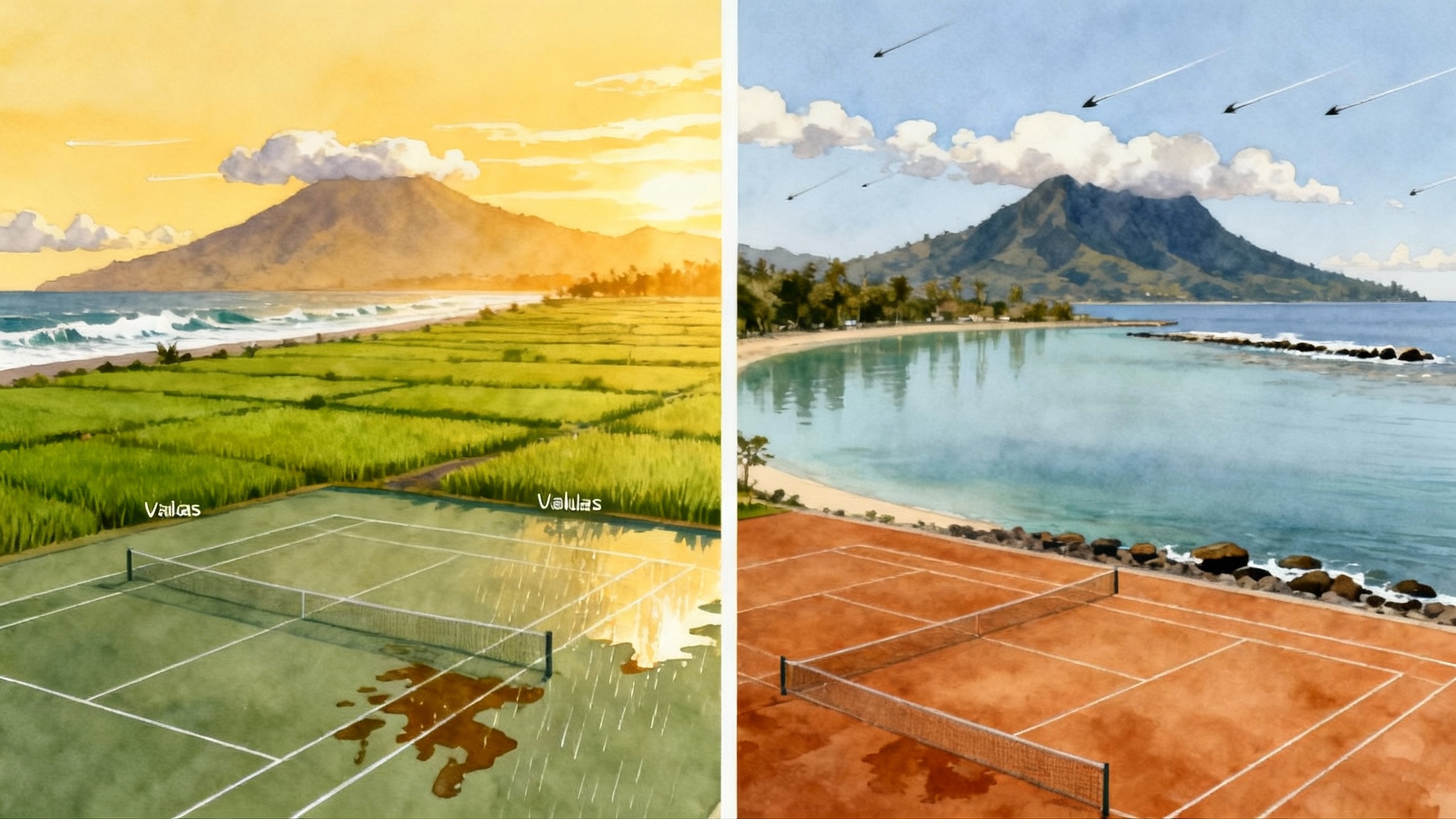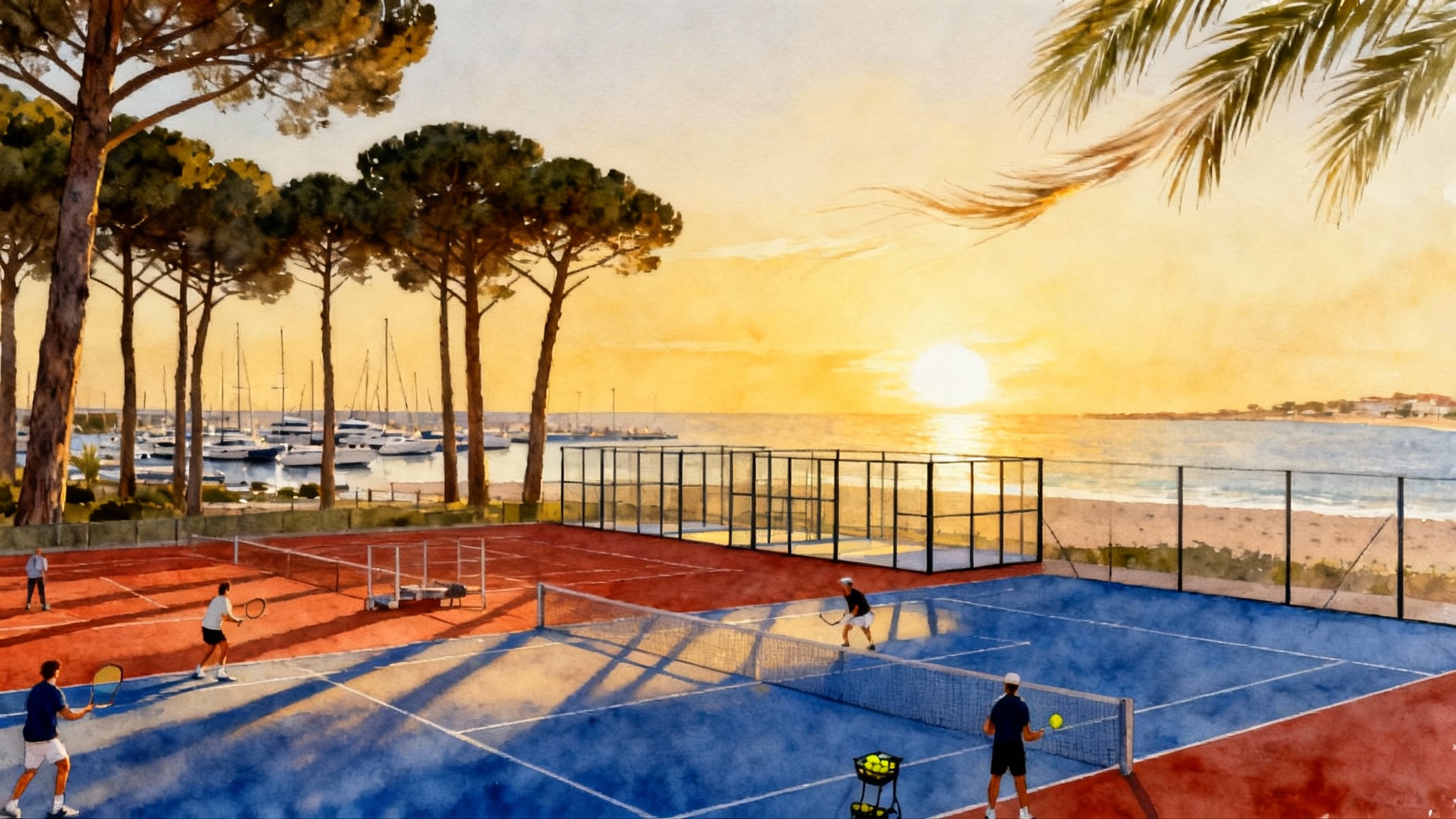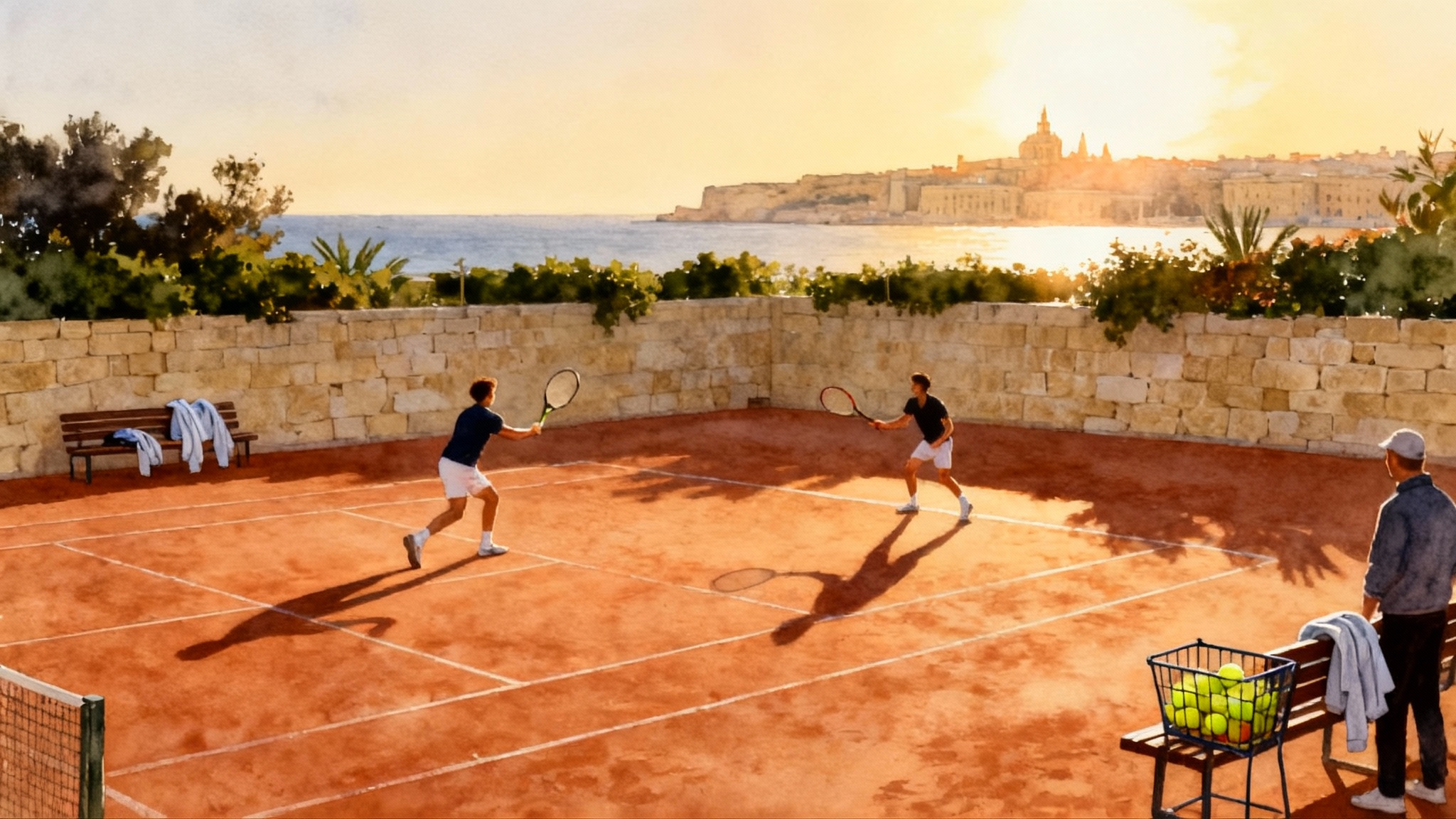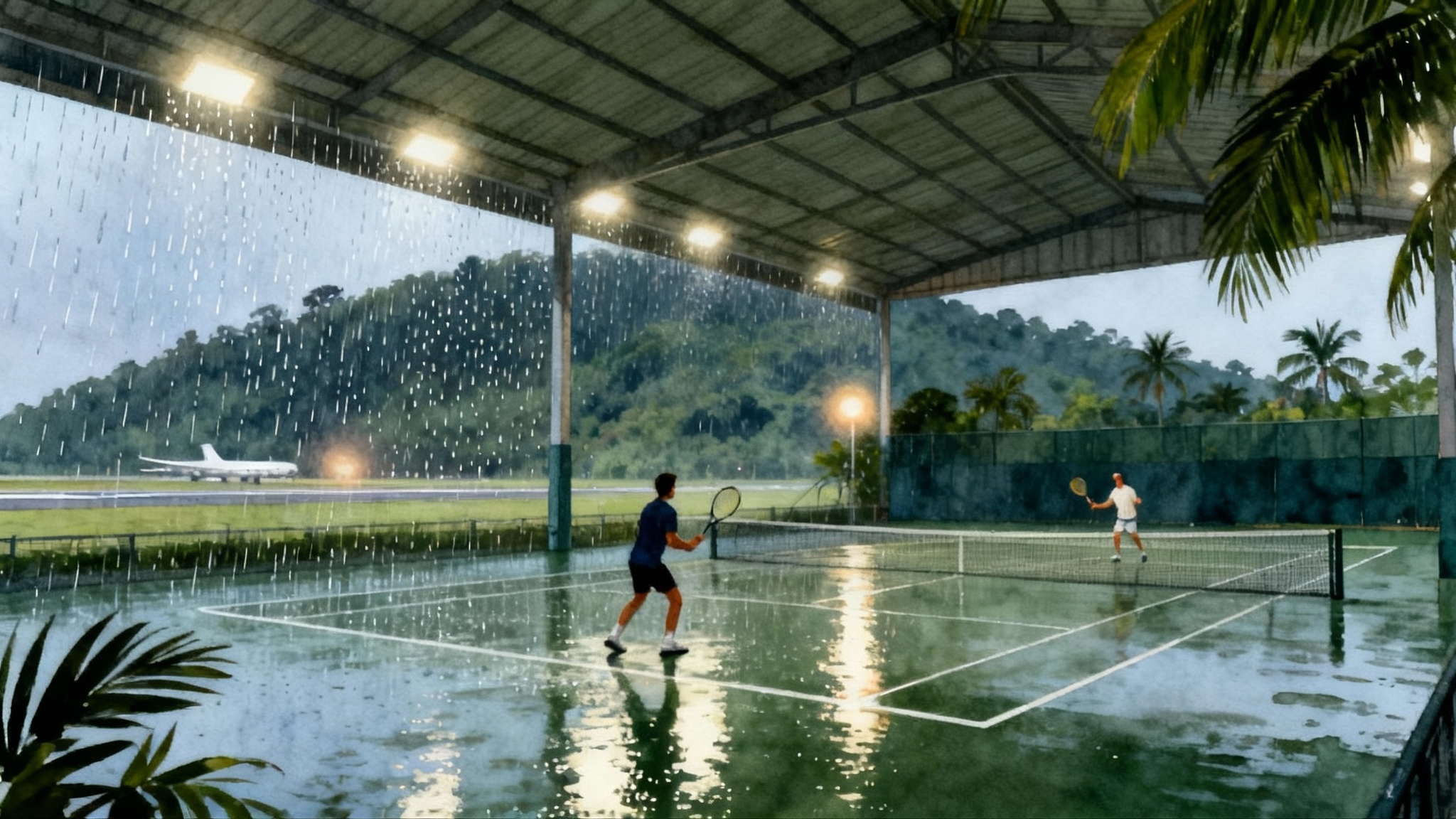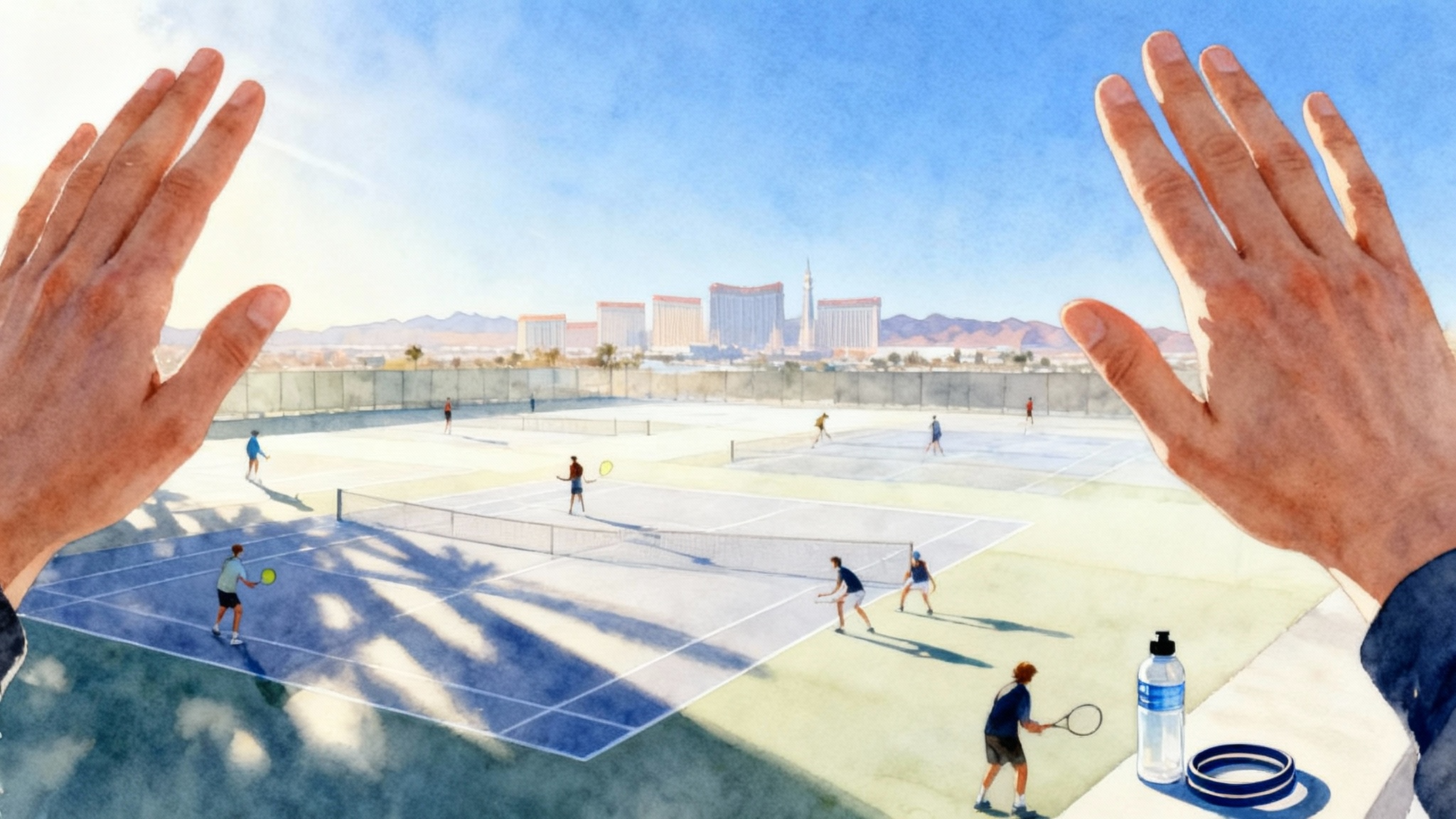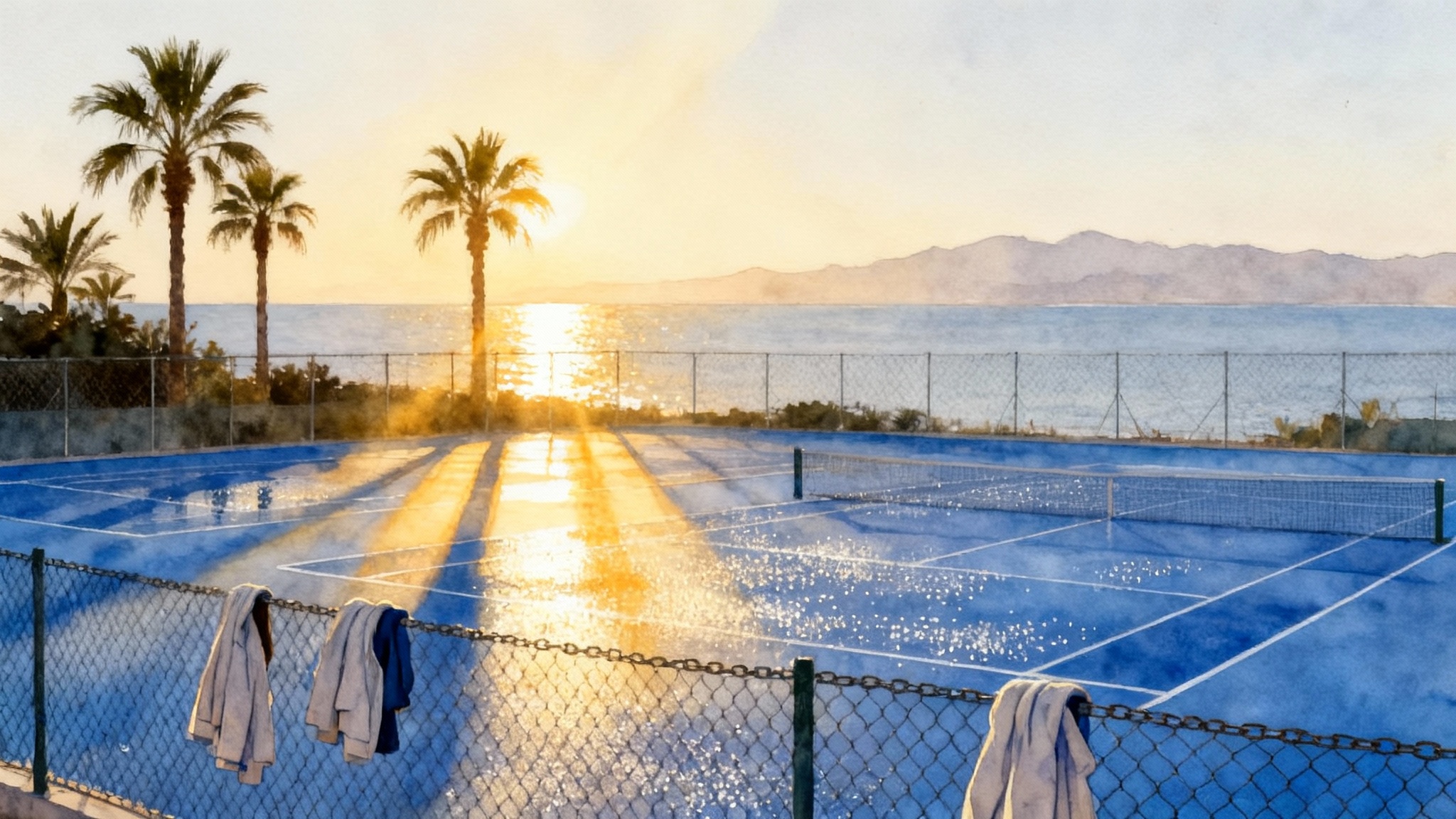Parma Clay Tennis 2025–26: Training at Tennis Club Parma
Plan a climate-smart clay block in Parma from September to November and March to May. This guide maps 5 to 7 day training plans, rail logistics via Milan and Bologna, places to stay and refuel, and value versus Barcelona and Rome.
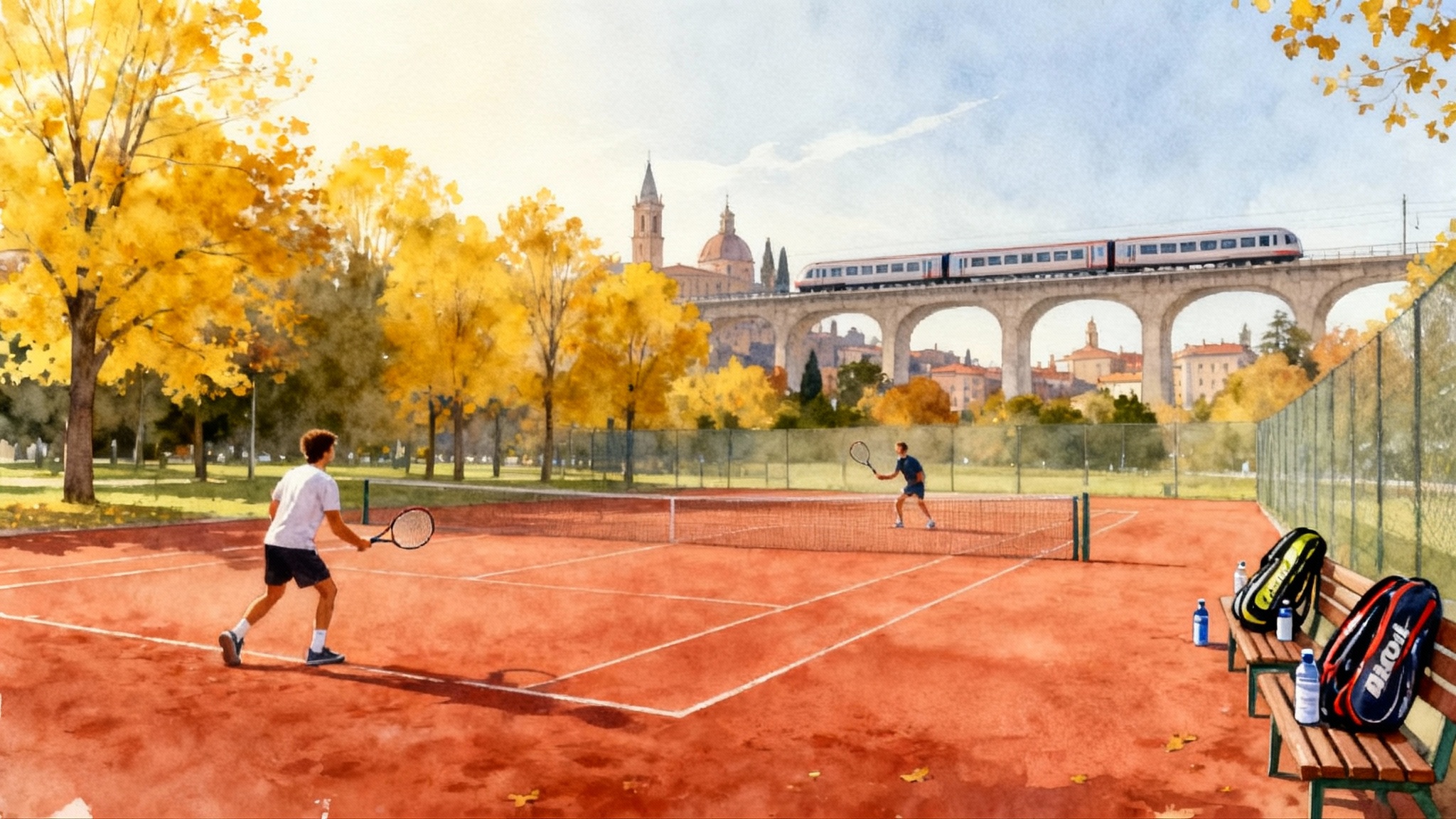
Why Parma is a clay base that just works
Parma sits in Italy’s Po Valley, a wide plain that enjoys calm autumns and mild springs. Those shoulder seasons create a sweet spot for clay: cool mornings to lower heart rate drift, enough midday warmth to keep joints happy, and humidity that prevents the surface from turning dusty too quickly. If you want consistent 2 to 3 hour blocks on red clay without an expensive boarding setup, Parma is a quiet ringer.
Tennis Club Parma adds the missing piece. It is a city club with a long tradition of clay-court play and a clear junior pathway, plus proximity to the Parma Ladies Open week that brings a wave of professional stimulus to town. See our Tennis Club Parma profile for the full snapshot. The result is rare: a pro-grade environment inside a compact, livable city where you can train, eat, recover, and sleep on an efficient loop.
The climate case for September to November and March to May
- Temperatures: expect average highs in the mid 70s Fahrenheit in September, the low to mid 60s in October, and the low 50s in November. March rebounds to the upper 50s, April sits around the mid 60s, and May reaches the low 70s. Translated to training feel, that is ideal for longer baseline patterns and high-volume footwork days.
- Humidity and clay moisture: morning dew and light humidity keep the top layer bonded, which improves grip and predictability. You can run 20 to 30 ball patterns with fewer bad bounces, and you can slide with confidence.
- Precipitation: expect several rainy days each month, but showers are often short and the surface drains well when maintained. Build a mental model where one morning gets bumped indoors or to strength work, and the following session returns to clay at near-perfect moisture.
How this supports 2 to 3 hour blocks:
- Aerobic load: cooler air makes it easier to sustain extended rally lengths without spiking heart rate. That allows two-hour drills that target shot tolerance and defensive transitions rather than short, fragmented bursts.
- Technical focus: stable bounce lets you rehearse the same shoulder-high clay contact in series. Topspin forehands, heavy crosscourt backhands, and high-kicker serves stick better at these shoulder-season temperatures.
- Recovery: you can run two sessions most days without the heat stress penalty of peak summer. Add a 15 minute cold shower or contrast soak and you are ready for the afternoon hit.
If you like shoulder-season planning, compare with our Vilamoura shoulder-season play for another climate-smart option.
Tennis Club Parma snapshot
- Surface and rhythm: multiple red clay courts, classic Italian watering and sweeping rhythm between blocks, and coaching that understands footwork patterns specific to clay.
- Junior pathway: a ladder of squads and sparring opportunities that can be slotted around school schedules. This matters if you are building match toughness without sending a player to a full boarding academy.
- Pro-week stimulus: during the Parma Ladies Open period, the city and club see an influx of touring pros and staff. See the Parma Ladies Open overview for dates. Even if you only watch from the fence and pick up a few practice sets as a hitter, the tempo and professionalism rub off.
Rail-linked logistics through Milan and Bologna
Parma sits on the main line between Milan and Bologna. That single fact makes planning simple.
- From Milan: trains from Milano Centrale or Milano Rogoredo reach Parma in roughly 70 to 90 minutes. If you fly into Linate, you can taxi or bus to Centrale. From Malpensa, use the airport train into Centrale and then the Parma train.
- From Bologna: Bologna Centrale to Parma is typically 50 to 70 minutes. This is a great routing if you want a smaller airport and a shorter first rail segment.
- At Parma station: the club area is a short taxi or ride share away. If you like public transport, local buses run frequently. If you stay near the station or near the park, you can keep transfers under 15 minutes.
Planning tip: check the Trenitalia regional timetable and preload tickets to your phone.
Packing for rail simplicity
- One roller bag and one racket backpack keeps stairs and platforms manageable.
- Set an alarm 10 minutes before departure to avoid last-minute platform dashes.
Where to stay and refuel between sessions
Stay zones that work:
- Near Parma Centrale station: you get easy arrivals, a short hop to the club, and quick access to groceries. Look for modern business hotels or serviced apartments.
- Near the park and historic center: quieter streets, shaded walking routes, and plenty of food within a few blocks. If you value sleep and café breakfasts, this is a good call.
Food that fuels training:
- Breakfast: yogurt, fruit, and a cornetto for carbohydrates. Add a shot of espresso and water as a pre-hit routine at least 90 minutes before the session.
- Post-morning session: panini with bresaola, arugula, and parmigiano, or a grain bowl. Pair with one bottle of mineral water for sodium and magnesium.
- Dinner: pasta portions sized for recovery, grilled fish or chicken, and a simple salad. Keep rich sauces light on double-session days. Treats belong on the lighter day or the rest day.
- Groceries: pick up bananas, rice cakes, chocolate milk, and electrolyte tabs at the market. These are your quick carbs for long rallies and your rehydration plan for the walk back.
Sample training plans you can copy
Below are two practical blueprints. Adjust volume for age, training age, and injury history. The goal is to use Parma’s shoulder-season climate to build clay command without overreaching.
Junior 7 day blueprint
Day 1
- Morning clay 2 hours: warm up with dynamic mobility, then 20 minute forehand and backhand shape-building with targets. Progress to crosscourt 2 on 1 defending. Finish with serve plus first ball patterns.
- Lunch and recovery: protein and carbs, 20 minutes legs up, brief nap.
- Afternoon 90 minutes: approach and volley series, drop shot pickup drills, 15 minutes of point play to seven with serve patterns.
- Evening: 30 minutes homework and 20 minutes light stretching.
Day 2
- Morning clay 2.5 hours: footwork ladder and figure eight slides. Rally to 50 ball tolerance on both sides at 70 percent pace. Add forehand inside out plus recovery footwork.
- Afternoon 60 minutes strength: bodyweight circuits, band work for shoulders, and calf raises. Add 15 minutes mobility.
Day 3
- Morning clay 2 hours: returns from deuce and ad with high-kicker serve feeds. Neutralize from deep middle, then counter to deep crosscourt.
- Afternoon 90 minutes match play: two short sets to four with no ad. Track first serve percentage and return depth.
Day 4
- Active recovery: 45 minutes easy spin on bike paths, 20 minutes hips and thoracic mobility. Light skills session with mini tennis.
Day 5
- Morning clay 2.5 hours: pattern day. Serve wide to deuce plus forehand to opposite corner, backhand line change under pressure. Add plus one variations.
- Afternoon 60 minutes strength: unilateral leg work and core rotation.
Day 6
- Morning clay 2 hours: point construction in the corners. Drop shot disguise and lob response. Finish with tiebreak to ten.
- Afternoon 60 minutes video: review 12 rally clips. Note contact height choices and spacing before line changes.
Day 7
- Match day: best of three short sets, traditional scoring. Warm down with 15 minutes of easy jogging and 10 minutes of breathwork.
Why this works: the cool to mild range reduces cardiovascular strain so juniors can accumulate 10 to 12 hours on clay while holding technical quality. The recovery day lands before the heaviest pattern work to keep volume high but sustainable.
Adult 5 day clay microcamp
Day 1
- Morning 2 hours: technical reset. Contact out in front, longer finish, add spin via racquet speed not grip squeeze. Finish with serve rhythm and 20 second routines between points.
- Afternoon 60 minutes: guided stretching and glute activation. Early dinner and early night.
Day 2
- Morning 2 hours: crosscourt heaviness. Defend, reset high and deep, reestablish center. Finish with three-ball patterns.
- Afternoon 90 minutes: match play set with one focus only. For example, every backhand at shoulder height goes heavy and deep crosscourt.
Day 3
- Morning 2 hours: approach and finish. Short cross, move forward, close with two volleys. Practice first step in after a short ball.
- Recovery: 30 minutes in the pool if your hotel has one, or brisk walk in the park.
Day 4
- Morning 2 hours: serve and return templates for clay. Add a second serve that jumps high to the backhand, then plan the third ball.
- Afternoon 45 minutes strength: hamstrings, adductors, trunk rotation. Keep it submaximal.
Day 5
- Morning 2 hours: match simulation with constraints. Only one line change per rally, or every point starts with a short ball feed to the backhand side. Track unforced errors and rally length.
- Afternoon: early train or late lunch. Recovery meal and hydration before travel.
Pro-level stimulus without boarding
You do not need to move into a dorm or pay academy board to get a professional rub. In Parma you can:
- Watch high-tempo hitting during the Parma Ladies Open period and model tempo and routines. Juniors learn more from ten minutes of courtside detail than from a lecture about rituals.
- Book focused sparring blocks with stronger players during event weeks. The city fills with hitters and coaches who value paid, punctual practice.
- Participate in local competitions that match training age. Italy’s competitive fabric is dense and many events sit an hour away by rail. You get real scoreboard pressure, then you are back in your hotel bed the same night.
If winter microclimates are on your radar, read our Grasse Valbonne microclimate guide to see how small weather advantages add up.
Cost and time comparisons: Parma versus Barcelona and Rome
Training environment costs vary by coach, club, and season. Use these ranges to frame the choice. All figures are indicative for a typical autumn or spring week.
Court time on clay
- Parma: about 18 to 30 euros per hour for daytime blocks, higher for peak evening hours.
- Barcelona area: about 20 to 35 euros per hour outside the biggest academies, but many clubs add guest fees.
- Rome area: about 15 to 28 euros per hour, with more variance across neighborhoods.
Private coaching per hour
- Parma: about 60 to 90 euros depending on coach seniority and whether the session includes video and ball machine usage.
- Barcelona area: about 70 to 120 euros, with top academies higher. Group options can lower the rate but change the ratio.
- Rome area: about 55 to 95 euros, often slightly lower outside the historic center.
Weekly package for a junior block
- Parma: 10 to 12 hours on clay plus two gym sessions and one match day can sit around 650 to 1,000 euros.
- Barcelona area: similar hours often price between 800 and 1,300 euros at mid-tier academies.
- Rome area: 600 to 1,050 euros, with more variability between municipal clubs and private centers.
Lodging
- Parma: business hotel or serviced apartment near the station or park often runs 85 to 140 euros per night in these seasons.
- Barcelona: 120 to 200 euros for central areas, less on the outskirts but with longer commutes.
- Rome: 110 to 180 euros in central districts, with deals outside the core.
Intra-city time costs
- Parma: 10 to 15 minute transfers. You can finish a session, refuel, and nap without crossing a metropolis.
- Barcelona: club and housing are often 25 to 50 minutes apart depending on traffic. Add time buffers for evening peaks.
- Rome: plan 25 to 60 minutes each way unless you live beside the club.
Rail and airport access
- Parma: one rail hop from Milan or Bologna, then a short local transfer. Door to door time is steady and predictable.
- Barcelona: excellent airport but more urban travel time. If you love a big-city vibe, this is a trade you accept.
- Rome: two main airports and a complex city grid. Time costs are manageable with planning, but spikes happen.
The takeaway: Parma is rarely the cheapest line item by line item, yet it is a time-efficiency winner. When you value two clean clay blocks per day and early nights, the smaller city footprint compounds gains over a week.
Practical booking tips
- Reserve clay courts early for the morning slot and the late afternoon slot. Leave midday for food and a nap.
- Confirm racquet stringing availability and bring two string sets you trust. Clay rewards spin and margin, but you will want a fresh bed after three heavy days.
- Hydration: carry a one liter bottle to sessions and finish it. Parma’s climate is kind to long rallies, but you still lose fluids steadily.
- Warm-up routine: start with a 10 minute walk from lodging to the club, then dynamic mobility. You hit more quality balls if your ankles and hips are awake.
- Rain plan: have an indoor fitness circuit ready for the occasional shower day. Keep volume, shift modality.
A day in the Parma loop
- 07:30 Light breakfast, short walk, dynamic mobility in the park.
- 09:00 Clay session 1. Heavy crosscourt work, then serve plus first ball.
- 11:00 Recovery meal. Legs up for 15 minutes. Short nap.
- 14:00 Strength or mobility. Core rotation and adductor work.
- 16:00 Clay session 2. Patterns and point play to seven. Track serve percentage.
- 18:00 Protein, carbohydrates, and salad. Short stroll for the legs.
- 21:30 Lights out. Cool room, flat pillow, no screens.
It is simple and repeatable. That is the point.
Why Parma’s setup suits families and serious adults
- Compact geography reduces decision fatigue. You spend energy on tennis, not logistics.
- Shoulder-season climate lets you load hours without heat stress or winter freeze.
- The club culture understands clay nuance. You feel it in how players move and how coaches cue shape and height.
- The proximity to a professional event week raises standards in a way that classrooms and chalk talks cannot.
Final word
A good clay block should feel like a rhythm, not a scramble. Parma gives you that rhythm from September to November and again from March to May. The weather supports long, technical sessions. The rail links cut friction. The club environment offers growth without the cost and disruption of boarding. If you want to lift your clay identity in 2025 or 2026, set Parma as your base, build two quality sessions per day, and let the small city do its quiet, compounding work.
